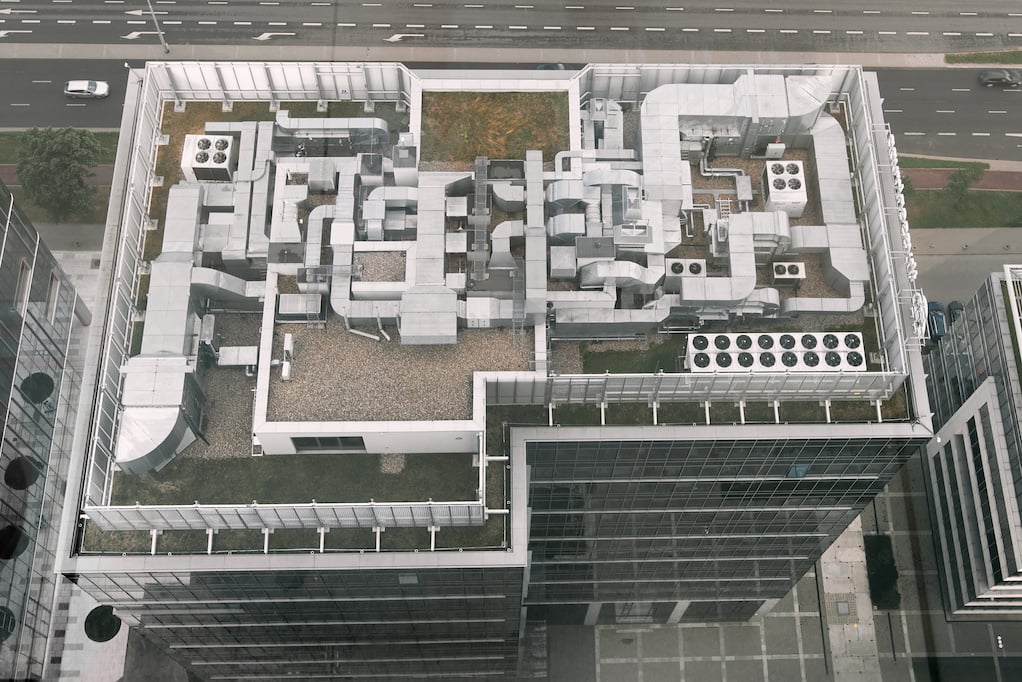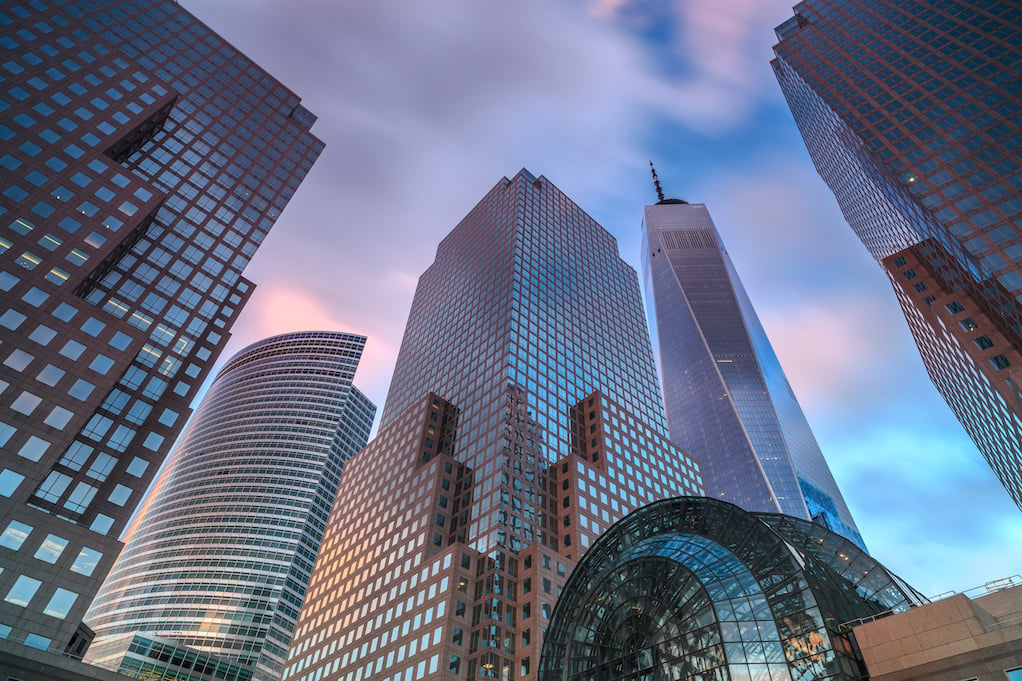In this article, you'll discover:
- The impact of new environmental regulations on corporate tenants and property owners.
- The cities enforcing the strictest green laws, including NYC and San Francisco.
- The financial burden of carbon neutrality and potential fines.
- How tenants can protect their operating expenses from unexpected costs.
Office occupancy rates are lower than ever, vacancies are at their highest, the country is in a Recession. Now what?
Buckle up! If you’re a corporate tenant or property owner, things are now somehow going to get even more unreasonable (and expensive). The government is waging a war on large buildings… but truthfully, it’s already started. Read more about the new environmental regulations that may cost property owners and tenants alike.
The Greenest Cities with the Strictest Laws
New York passed the Climate Mobilization Act in April of 2019, which placed greenhouse gas emission limits on commercial buildings larger than 25,000 square feet. Properties that exceed the limits will face fines of $268 per metric ton over the limit starting in 2024 with stricter standards plotted to begin in 2030.

Obviously, what happens in NYC doesn’t exist in a void. Similar edicts are appearing throughout the country particularly in our biggest and bluest metropolitan areas.
San Francisco is, of course, included. The city has established a target of achieving zero greenhouse gas emissions from large buildings by 2035, in order to combat the effects of global warming and reach its goal of carbon neutrality. Starting in December, buildings that fail to meet the new requirements will face a penalty of $100 a day for up to 25 days within a 12-month period.
Other cities phasing in stricter sustainability parameters include:
- Washington D.C.
- Boston
- Miami
- St. Louis
If you're looking for commercial real estate in one of these cities, there's things you can't afford to mess up. With the new green legislature, the importance of getting a good deal is more critical. Learn how to find the best office space for the best price in the free course below.
Carbon Neutrality Comes at a Cost
These looming enforced upgrades are only a singular part of the push towards neutrality.
The corporate sector is being hit hard. And of course, they are. Commercial buildings are responsible for a huge chunk of the total global emissions.
|
"Residential & commercial buildings account for 40% of U.S. energy consumption and 31% of greenhouse gas emissions, more than transportation, manufacturing, agriculture, or any other sector of the economy. -Propmodo |
Now, on top of local fines, Both the Securities and Exchange Commission (SEC) and U.S. Treasury Department released proposals that forced public companies to disclose their greenhouse gas emissions and climate risk data.
In an era where sustainability is a pillar of strong corporate brand image, reporting such data can make or break a company’s ability to connect with the public. The importance is further compounded by the prevalence of ESG in corporate America.
Since new ESG rules placed carbon limits on large buildings, office tenants (especially in multi-tenant metropolitan buildings) are likely to be inordinately affected. Let’s get into it.
Doing Fine
The new wave of legislature isn’t going to come cheap. It’s projected that starting in 2030,
|
"Owners of more than 13,500 properties may be fined a cumulative $900 million annually." - The Real Deal |
What’s worse is that according to the study conducted by Level Infrastructure and commissioned by the Real Estate Board of New York, $200 million in fees may begin in New York next year on the projected 3,700 properties that do not make code.
The Cost of Upgrades
The cost of the fees doesn’t take into account the cost of fixing the issue. Let’s put this into perspective. The new regulations are pushing for zero-emissions. To achieve this, building owners likely need to retrofit their properties with new electric heating and cooling systems.

“Even if you got a new HVAC system over the last four years, it is not likely
zero carbon… The standard of zero emissions requires you to consider other technologies that are available but expensive. This means your previous equipment is suddenly obsolete,” Darrell Wheeler, Vice President and Senior Credit Officer at Moody’s. He continued that...
|
The cost of such a system will obviously vary, but will likely be up to $60 per square foot. For a 2 million square foot building, this is a whopping $12 million. -Data, Darrel Wheeler of Moody's Analytics |
This new financial weight comes at a time where commercial landlords have already obviously been suffering. This group has already sustained massive revenue loss in the last few years. The unprecedented effects of WFH have sent the market evaluation of office space into a tailspin. This is especially true for owners of Class B Buildings.
So, while the initial cost of these laws taking action may fall on property owners, tenants should be prepared for the possibility that their landlord will be looking to negate their total loss.
What Tenants Can Do to Protect their OpEx
If you’re not already aware of your building’s emission data, it is time to become aware. If you are located in one of the cities, this is particularly important. Because in the case that you are in a massive metropolitan office building and it hasn’t already converted, you’re looking at possible fees starting next year.

“If you have a net lease any new fines may qualify as billable expenses which could create an interesting discussion about whether that can be charged back to tenants,” Darrel Wheeler of Moody's Analytics.
If you are not careful when negotiating your OpEx, you could be financially responsible for more than you bargained for. If you’re drafting a new lease or in a position to renegotiate, ensure that the following concerns are thoroughly addressed:
- What costs are passed on to you, the tenant
- How are expenses calculated
- What is your expense share
- What controls are on the expenses; are there any caps?
- When are expense increases paid
Any capital expenditures or additions to the building should remain in your landlord’s budget. This is especially true if they will outlast the length of your tenancy. Remember: They’re upgrading their building. Out-of-code buildings will be far devalued, so by contrast the market value of their property elevates with green standards. So, make sure that you don’t get stuck with the bill.
Protect Yourself with a True Tenant Rep™
So, when you’re drafting a new lease, you have to think about how to protect yourself. But, with an almost innumerable number factors to consider, it can feel like an impossible feat. Especially since a lot of these regulations feel so new. There’s a lot of uncharted territory here for who is footing the bill or environmental upgrades. With no fixed set of expectations, a good Tenant Representative is all the more important. They can take a hard look at your existing or new lease to identify the areas where you are vulnerable to cost hikes.
They can also work with your landlord to determine If total building operating expenses and use may change with upgrades according to:
- Temperature ranges and controls
- Climate controls
- Ventilation
- Water usage
If you are a tenant in a green-leaning building or city, you should be hyper-aware of your responsibility to cover any expenses. A relationship with a True Tenant Representative™ is even more critical if you’re located in one of these areas. So don’t wait any longer. If you’re in NYC, San Francisco, Washington D.C., etc. these restrictions are starting fines this upcoming year. There’s no time to waste. Take a look at how your budget may be implicated when these regulations take effect by working with a True Tenant Rep™ at iOptimize Realty® today.









